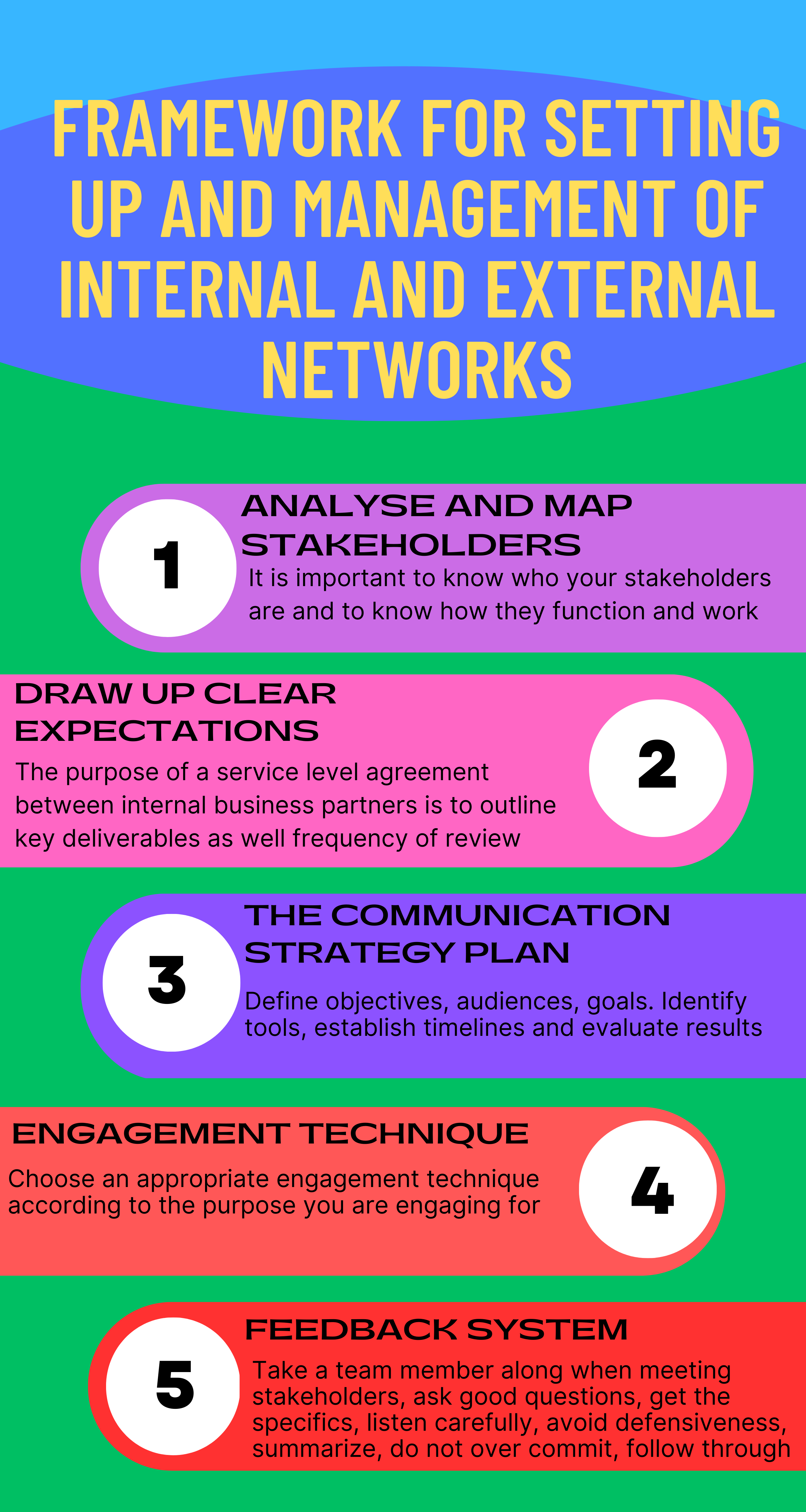Click here to view a video that explains internal and external networking.
The framework below describes how a company can manage external networks. Just as in the case of strategy, goals and objectives, the company on a strategic level (management or representative task team), would compile the framework first. After the company has decided on the general direction in that external networks will be managed, each department needs to break it down into departmental external relationship management plans.
This framework can be used at company and departmental levels:
|
Step 1 - Stakeholder Analysis and Mapping |
Step 2 - Clarify Expectations |
Step 3 - Communication Strategy and Planning |
Step 4 - Engagement Strategies and Techniques |
Step 5 - Continuous Assessment and Follow Through |
|
Identify key stakeholders |
Specify key deliverables via formal or informal service-level agreements |
Review methods to inform different groups including timing and frequency |
Involve stakeholders in the design and implementation |
Clarification of roles and responsibilities |
|
Define stakeholder concerns and issues |
|
Use the communication plan and create a continuous dialogue with all stakeholders |
|
Validate and evaluate the communication process |
|
Assess their level of commitment and resistance |
|
Obtain feedback and involvement |
|
|
1. Analyse and Map Stakeholders
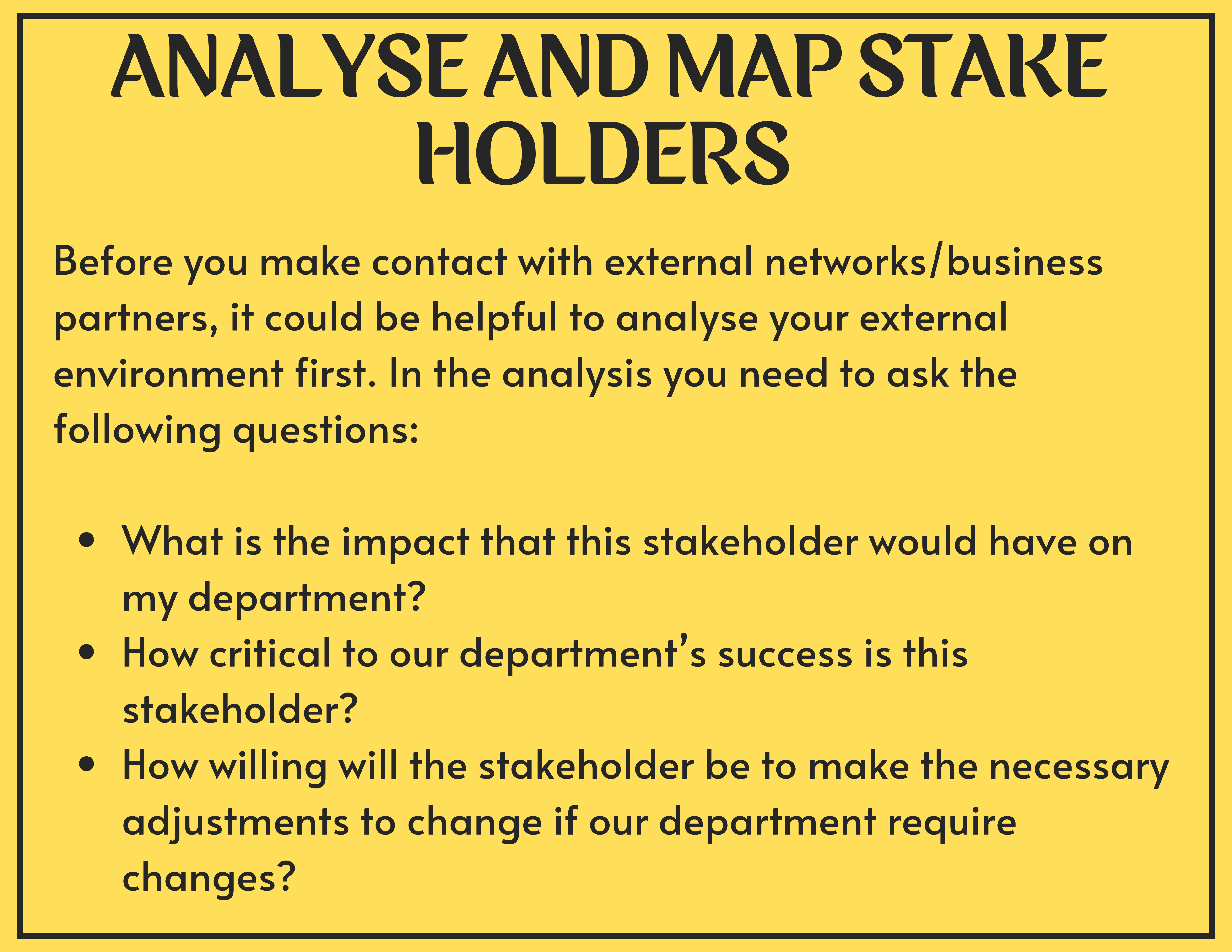
2. Draw Up Clear Expectations In A Service Level Agreement With Both Internal Suppliers And Customers
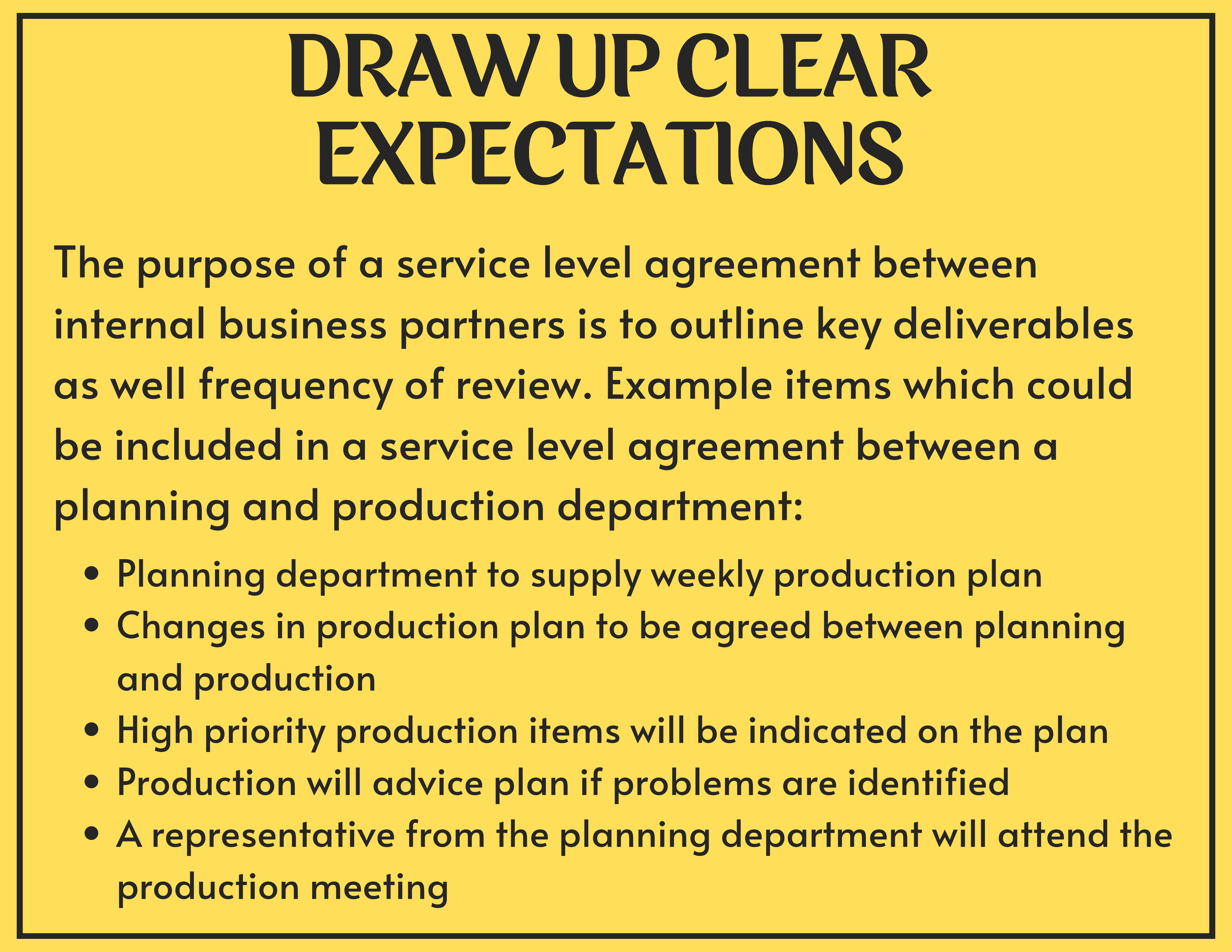
Below is a tool to assist your team to summarise supplier commitments and customer expectations on one page.

3. How to Develop the Communication Strategy and Plan

Define objectives. State the results you want to achieve. These might include:
- Excellent service to customers.
- Stakeholder loyalty.
- Centralization of the communication effort.
- Increased internal and external network teamwork.
- Improved product delivery.
- Visibility for the association and the industry or profession, and
- Influence on government, media, consumers, and other audiences.
Define/review audiences. List all the audiences that your department might contact, attempt to influence, or serve. If you have already done this in your stakeholder analysis/mapping, skip this step.
Define goals. Break down objectives into smaller, doable chunks. For example, if the objective is to improve customer service, goals might include improved training for your team on quality control, a manual for handling complaints, and ongoing information to customers. (refer to SMART goals in Learning Unit 1)
Identify tools. Decide what tools will be used to accomplish stated goals. These tools can be anything from a simple flyer to a glossy magazine. Don't overlook less obvious tools such as posters, report covers and Web sites. Brainstorm ideas with your staff.
Establish a timetable. Once objectives, goals, audiences, and tools have been identified, quantify the results in a calendar grid that outlines roughly what projects will be accomplished and when. Separate objectives into logical time periods (monthly, weekly, etc.).
Evaluate the result. Build into your plan a method for measuring results. Your evaluation might take the form of:
- A monthly report on work in progress.
- Formalized department reports for presentation at staff meetings.
- Periodic briefings of the chief staff executive and the department heads, and
- A year-end summary for the annual report.
Developing a written communication plan will take effort. Plan on three or four days the first time you do it. Once in place, the written plan will smooth your job all year long, earn you respect from your managers and other staff, help set work priorities, protect you from last-minute demands, and bring a semblance of order to your chaotic job.
4. Select an Engagement Technique
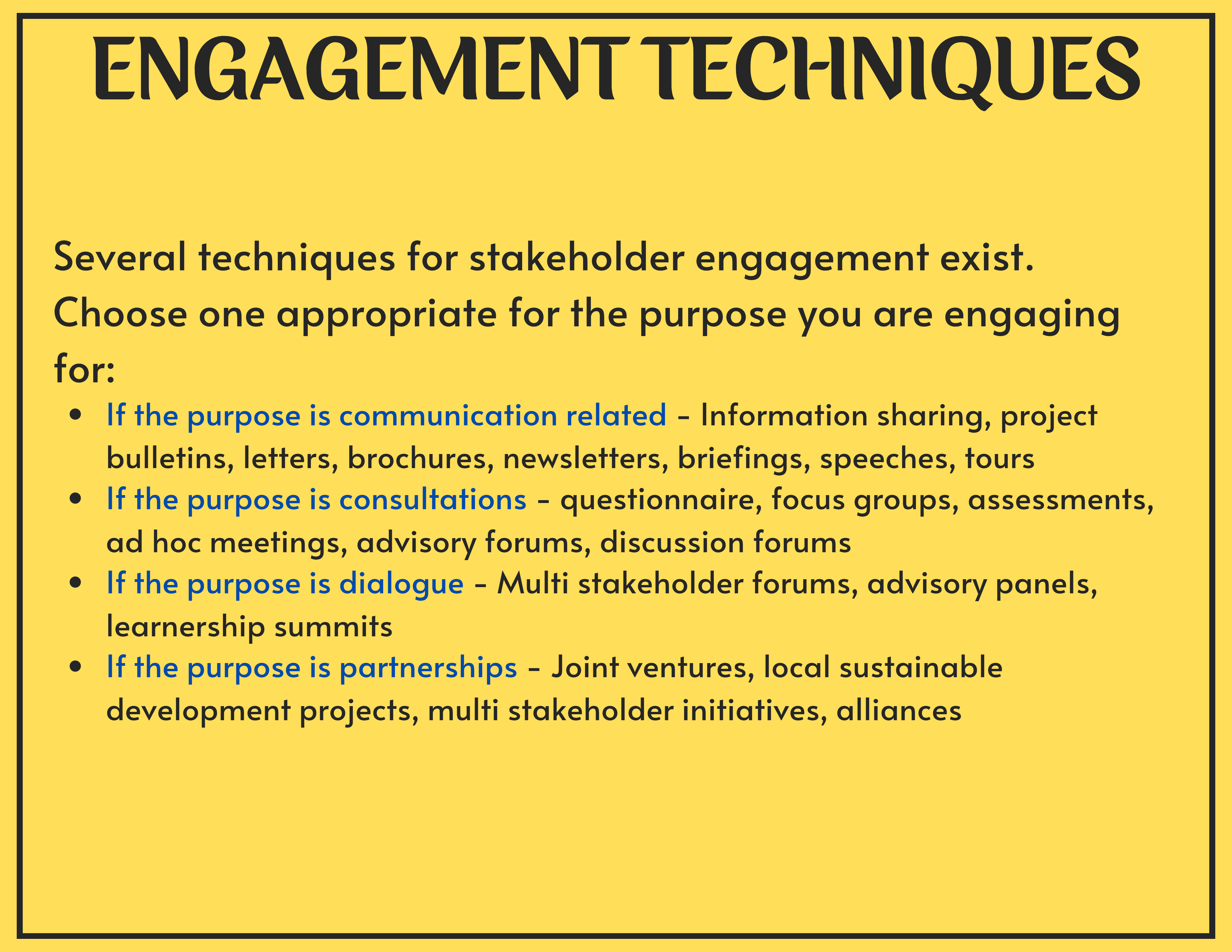
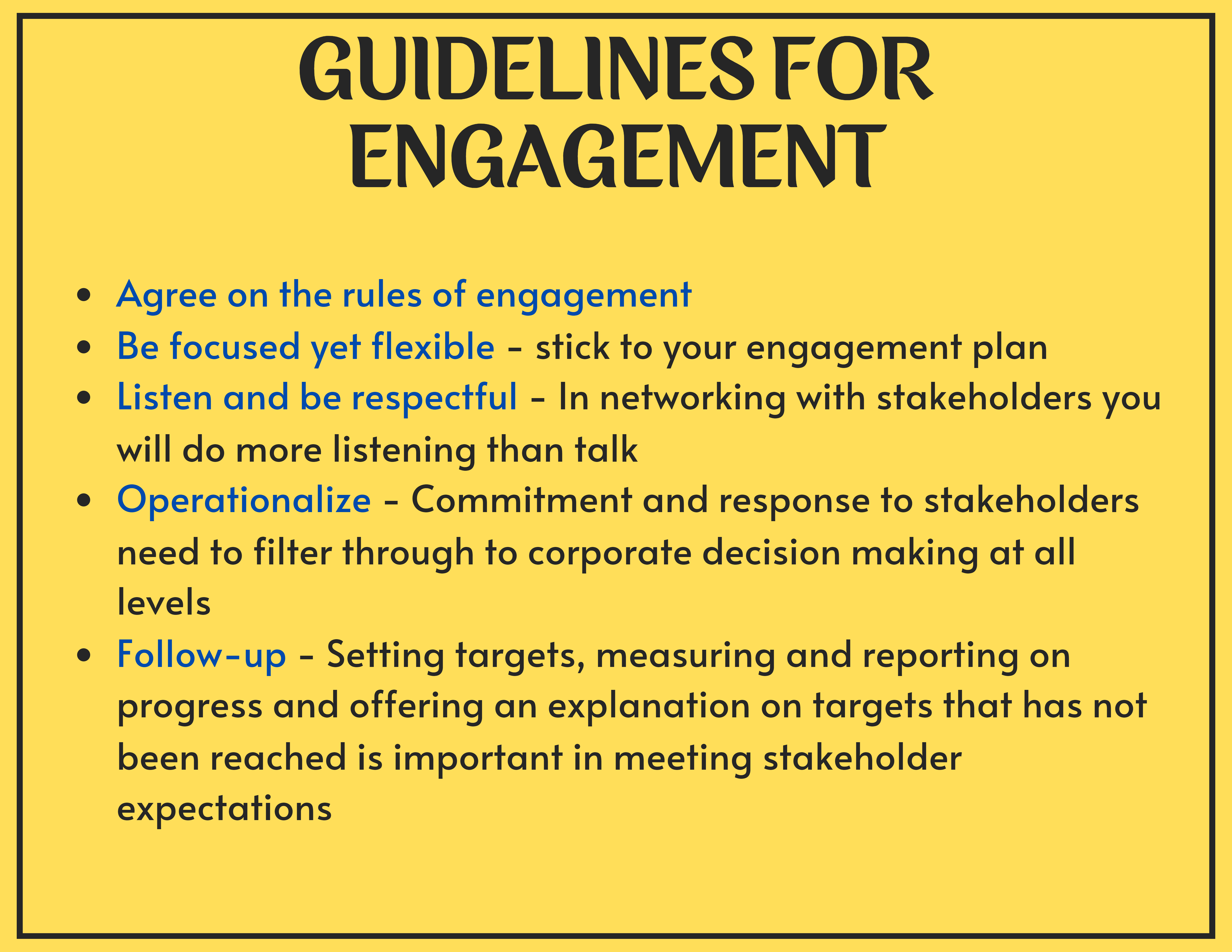
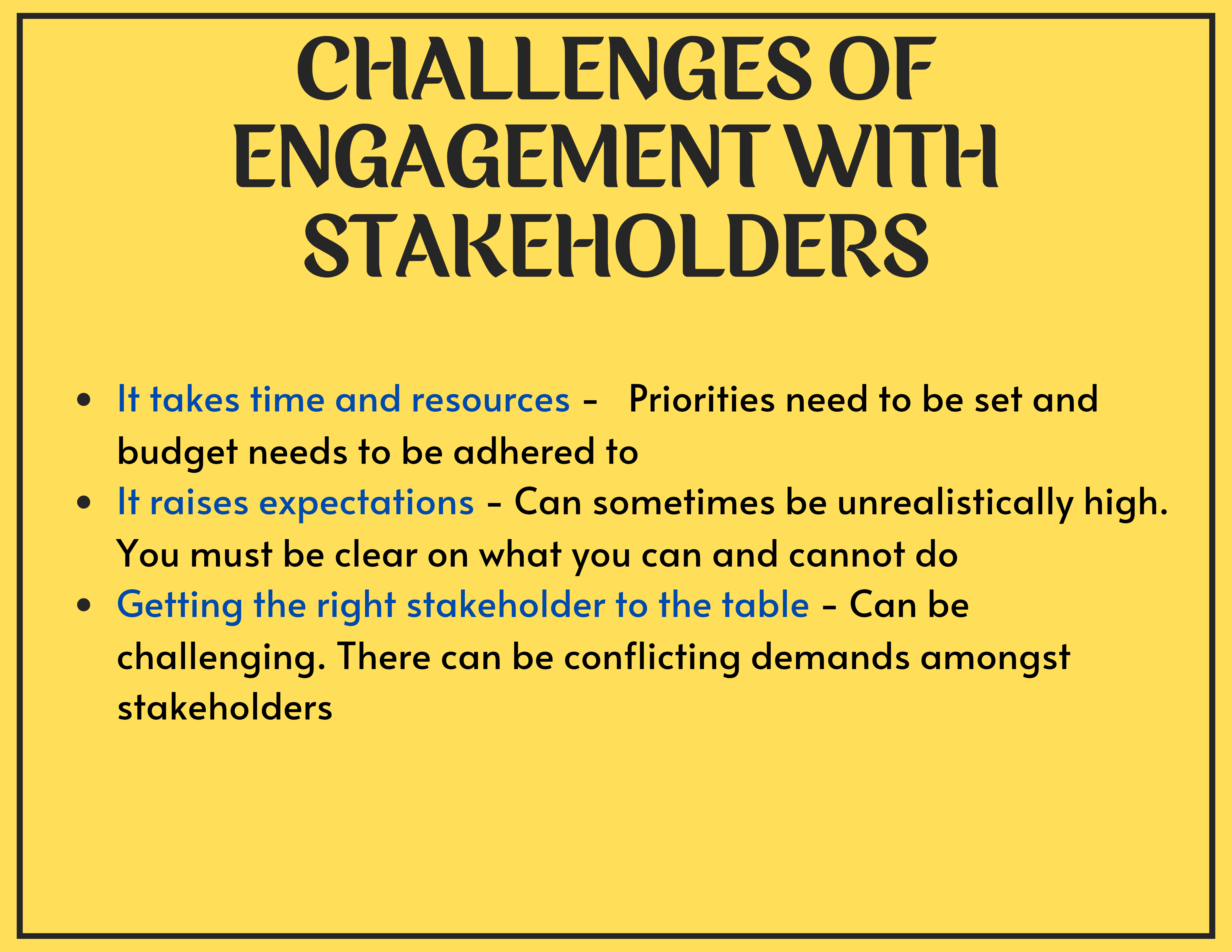
Some challenges of stakeholder engagement include:
- It takes time and resources: If successfully managed, stakeholder relations grow, not fade. Additional stakeholders would like to engage. Some stakeholders need to be educated about the nature of the relationship. This can drain company resources as most companies are not set up to respond to all stakeholder concerns and comments. Priorities need to be set and the budget needs to be adhered to.
- It raises expectations which can sometimes be unrealistically high. You must be clear on what you can and cannot do.
- Getting the right stakeholder to the table can be challenging: there can be conflicting demands amongst stakeholders. Companies or departments sometimes end up acting to resolve problems between stakeholders. Again, you should continuously ask if this stakeholder engagement assists your business to reach its goals. If not the engagement should be discontinued. It is important though that you keep a long-term view. Some relationships can be frustrating in the short term, but in the long term, it would do more harm to discontinue it than to keep it going.
5. Create and Maintain a System for Feedback and Continuous Improvement
The same as with a team and individual performance goals, business partners should agree on responsibilities, target dates/frequencies as well as how success will be measured. Business partner contact meeting frequency should be agreed upon. The meetings should be held to discuss the performance of each business partner against their agreed targets/goals. Performance improvement plans should be drawn up to foster a spirit of continuous improvement amongst business partners.
Studies on customer satisfaction have shown that dissatisfied customers seldom give verbal or written feedback to their suppliers, they simply quit buying from them. Although this is obviously studies on external customer relations, it could be applied to internal customer relations. When departments fail to deliver to their internal customers, the internal customer loses trust, engagement drops and relationships break down. In order to prevent this from happening, regular business partner contact is essential. Here are some guidelines when meeting with your internal customers:
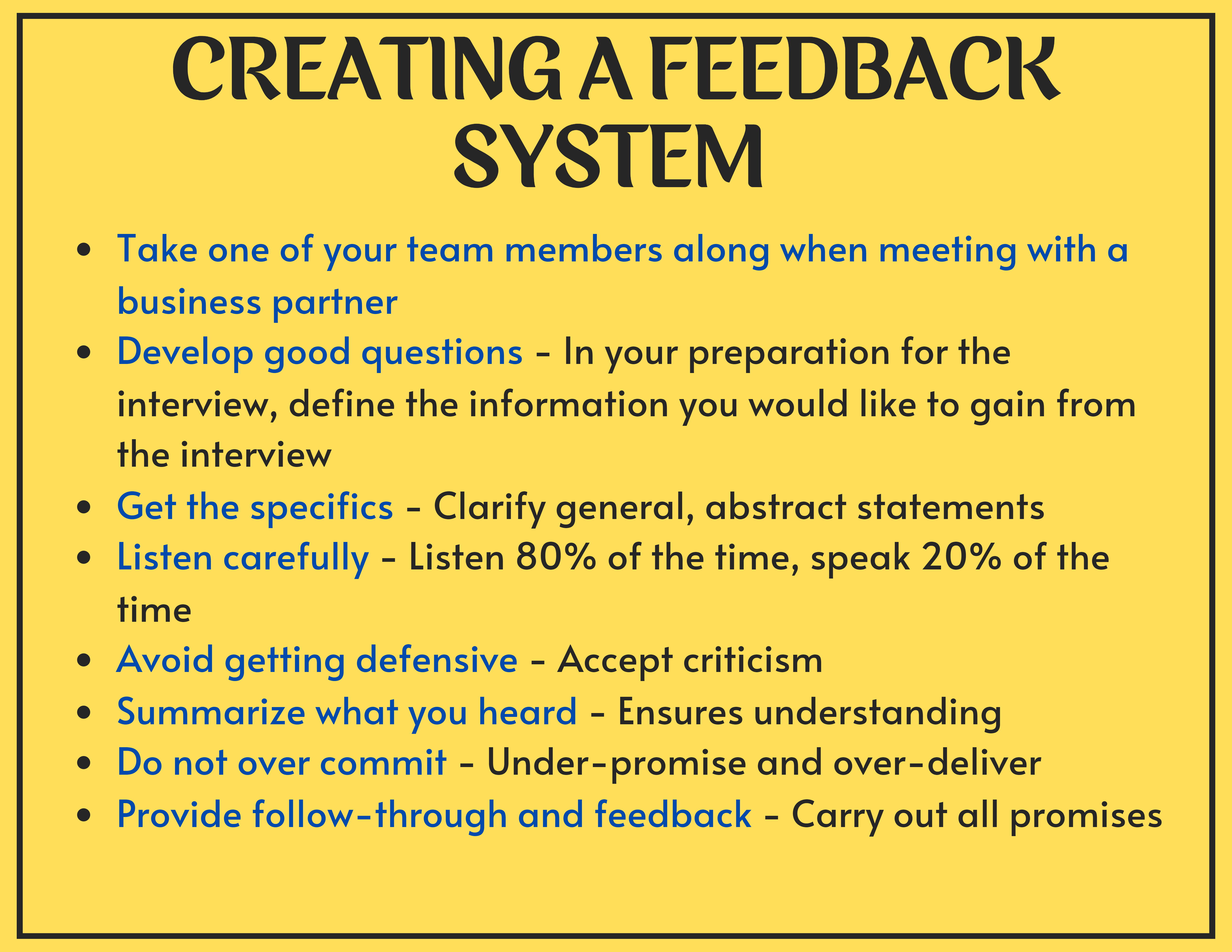
Take one of your team members along when meeting with a business partner to assist in taking notes ensuring that all expectations are recorded; help with understanding the customer expectations; emphasise your commitment to good service to your customer; develop your own team members to appreciate customer expectations.
Develop good questions: In your preparation for the interview, define the information you would like to gain from the interview, and then draw up a set of questions to get the information. Open-ended questions give the customer the opportunity to elaborate, discuss and give more data.
Get the specifics: If the customer makes general, abstract statements, clarify them by getting the goal-specific expectation, linking deliverables, timelines and performance measures to expectations. E.g. ‘What do quick turnaround time mean to you?’; ‘What would the ideal turnaround time be for you?”; What would the minimum acceptable turnaround time be for you?”
Listen, listen, listen: Do not use this interview to defend and market your department. The purpose of this interview is to understand how the customer regards your department. A good rule of thumb is that the customer should do 80% of the talking and you 20% mainly to clarify important points.
Avoid getting defensive: A natural reaction to negative feedback is to get defensive. Avoid this impulse. Rather than seek to fully understand the specifics and how it affected the customer, and agree on performance improvement.
Summarise what you heard: This helps you to check your understanding. Emphasize what you view as the main points of the meeting. After summarising you can ask the customer ‘how did I do?’ and ‘do you have any points to add’
Do not over-commit: Do not give the impression that ‘all problems will be fixed’ if it is not the case. Rather under-promise and over-deliver than the other way around.
Provide follow-through and feedback: Make sure any promises made are carried out, and that you provide feedback to your customer. Remember to thank him/her for recommendations and explain what was done. This will assist to strengthen your relationship.
To summarise, here is an example of a Stakeholder Engagement Plan

